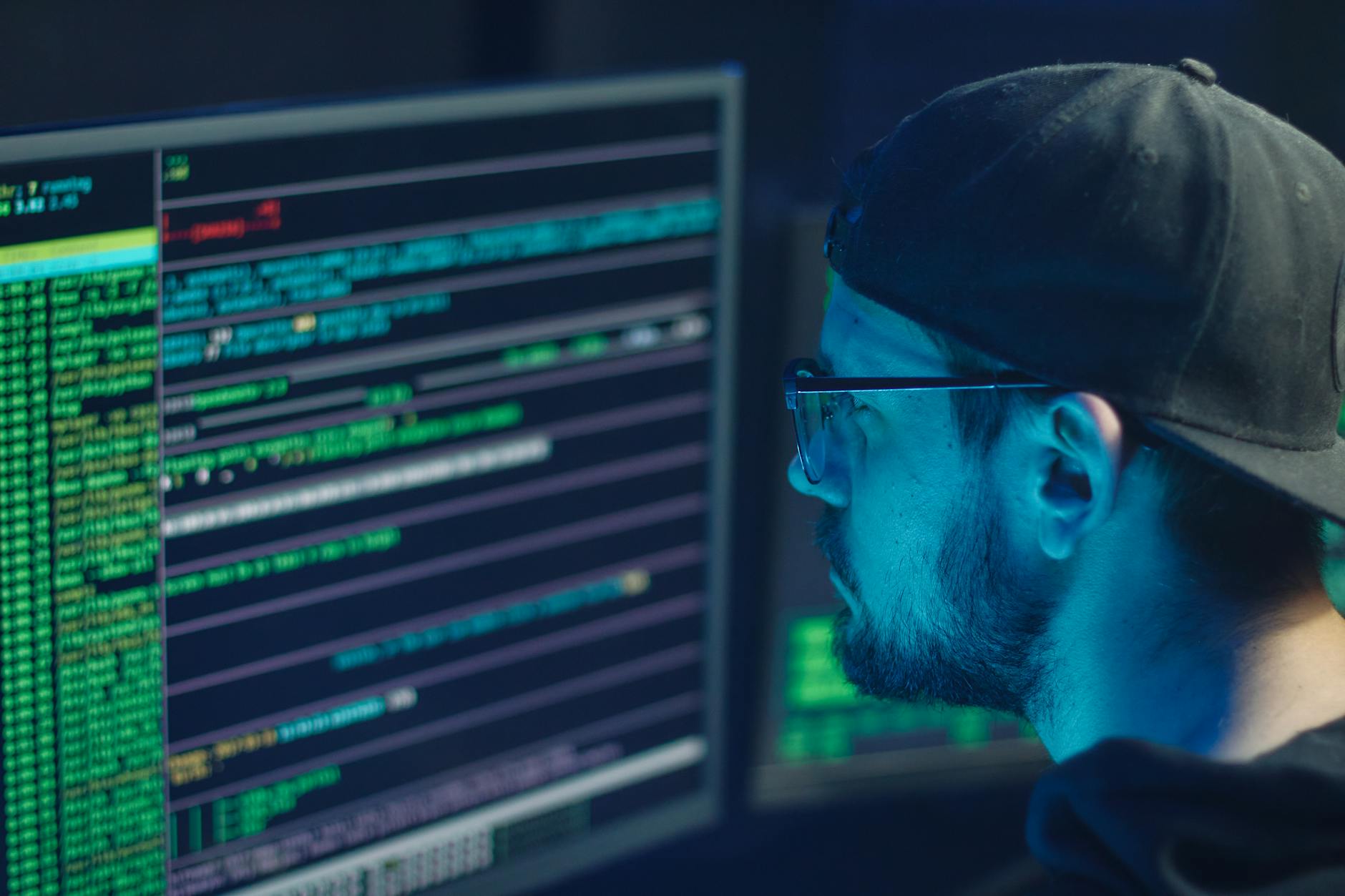Imagine receiving a call from your boss, instructing you to transfer funds immediately. The voice is unmistakably theirs, yet it isn’t—a product of deepfake technology. In 2024, the lines between reality and digital deception are blurring as deepfakes evolve into formidable tools for cybercriminals. Deepfakes, once a mere novelty, are now employed in sophisticated phishing schemes, targeting not just financial institutions but anyone with a digital footprint.
Deepfake phishing combines clever social engineering with hyper-realistic audio and video to manipulate unsuspecting victims. This isn’t about simple email scams anymore; it’s about real-time interaction that feels authentic, making it alarmingly effective. As these threats multiply, understanding and preparing for them is crucial. We’ll explore how pervasive these risks are becoming and what steps you can take to safeguard your personal and professional life from this new wave of cybercrime.
Understanding Deepfakes
In today’s digital world, deepfakes have emerged not just as a technological novelty but as a tool with significant societal implications. As we traverse the landscape of digital deception, it’s essential to grasp what deepfakes are, how they are produced, and how they are already influencing our everyday lives.
Definition and Background
Deepfakes represent a deceptive use of artificial intelligence, blending the words ‘deep learning’ and ‘fake.’ Simply put, deepfakes are creations where AI is used to manufacture or alter videos and images to depict events or statements that never occurred. This idea isn’t entirely new; manipulation of media has been around since the era of Photoshop. However, today’s deepfakes are far more sophisticated and convincing, powered by advanced deep learning algorithms. The journey of deepfakes traces back to academic experiments in AI, skyrocketing in public awareness with their introduction into mainstream media in the late 2010s. According to MIT Sloan, the rapid technological strides have only bolstered their potency, blurring the lines between real and fake.
How Deepfakes are Generated
Creating a deepfake isn’t as simple as applying a filter. It involves intricate techniques using AI and machine learning. At the core are autoencoders and Generative Adversarial Networks (GANs). Autoencoders learn to compress and decompress data, capturing the essential features of an image or video. Meanwhile, GANs work on a competitive approach where one neural network generates fakes, and another tries to detect them. This push-and-pull dynamic refines the deepfake’s realism. UVA Information Security explains that through thousands of iterations, the deepfake model becomes adept at mimicking the nuances of facial expressions, movements, and even voice, which is why they can be eerily credible.
Examples of Deepfakes in Society
Deepfakes have penetrated various spheres, from entertainment to politics, often with disruptive consequences. In the media, some instances are lighthearted—like inserting a celebrity into a famous movie scene. However, the darker side emerges in politics, where deepfakes can mislead voters or tarnish reputations, such as the fake video of President Volodymyr Zelenskiy supposedly asking his military to surrender. CNN notes that such deepfakes have already become contentious elements in political campaigns, with potential to sway public opinion drastically. OpenFox further states that these synthetic media forms are not only impacting cultures but also straining our legal and ethical frameworks.
Understanding the nuances of deepfakes is crucial as they continue evolving, permeating various aspects of society and presenting new challenges in discerning truth from fabrication.
The Phishing Landscape
Welcome to this section of our cyber journey, where we discuss the tactics that cybercriminals employ to dupe individuals and organizations. Phishing isn’t just about a poorly worded email anymore; it has evolved into a sophisticated attack methodology. With deepfakes now adding a new and terrifying twist, it’s more pertinent than ever to understand phishing’s underlying mechanisms.
Definition and Types of Phishing
Phishing is the act of tricking individuals into disclosing sensitive information such as usernames, passwords, and credit card numbers by masquerading as a trustworthy entity. It’s like a scam artist donning different disguises to gain your trust and sneak into your personal treasures. Phishing typically arrives in the guise of emails, but it’s not confined to the inbox anymore.
Here are some common types you might encounter:
- Email Phishing: The classic form where attackers send emails that appear to be from a legitimate source.
- Spear Phishing: A more targeted version, focusing on a specific individual or organization.
- Whaling: This targets the big fish—executives or high-profile individuals.
- Vishing and Smishing: Phishing doesn’t stop at emails; it extends to voice calls and SMS texts.
- Clone Phishing: Attackers create an almost identical replica of a legitimate email to fool the victim.
For more detailed insights, you can check out Trend Micro’s guide on the various phishing types, or Fortinet’s comprehensive list.
Recent Trends in Phishing Attacks
Phishing attacks are escalating, both in frequency and complexity. According to a report by Proofpoint, phishing has remained a top method for cybercriminals due to its efficacy.
- Rise in Phishing Emails: An average of 31,000 phishing messages are sent every day. This number reflects the persistence of phishing attempts despite increasing awareness and defenses.
- Growing Sophistication: Attacks now exploit current events and leverage psychological manipulation, making them harder to detect and resist.
- Widespread Impact: Nearly 84% of organizations worldwide have encountered at least one phishing attack, indicating its pervasive threat.
These statistics highlight an essential aspect of phishing: it’s always evolving. The attack strategies adapt to current security measures, keeping cybersecurity experts on their toes. To learn more about recent phishing trends and stats, you might want to look at APWG’s phishing activity trends reports.
Understanding phishing today requires keeping an eye on these trends and adapting security practices accordingly, as phishing tactics continue to morph and challenge our online safety.

Photo by Mikhail Nilov
The Intersection of Deepfakes and Phishing
As the digital threat landscape intensifies, the combination of deepfakes and phishing represents a particularly insidious form of cybercrime. These attacks leverage cutting-edge technology to create convincingly authentic deceptions. This section explores how deepfakes amplify the threat of phishing and provides real-world examples of incidents that highlight the severity of this cyber threat.
How Deepfakes Enhance Phishing Attacks
Deepfakes bring an unsettling realism to phishing scams, making them more persuasive and harder to recognize. Here are some specific ways deepfakes make phishing more convincing and potent:
- Voice Manipulation: Cybercriminals use deepfake technology to clone voices. Imagine receiving a phone call, apparently from your CEO, instructing you on a seemingly urgent matter. This manipulation can prompt hasty compliance without question.
- Video Fabrication: By creating realistic fake videos, attackers can impersonate executives or known contacts during video conferences. This adds another layer of authenticity to fraudulent requests.
- Tailored Attacks: Deepfakes can be crafted to include context-specific details, making spear phishing attempts more credible. With AI-driven data mining, attackers tailor their scams to appear legitimate to specific targets.
For more insights on how deepfakes enhance phishing schemes, you can explore the perspective detailed by TechTarget on this evolving cyber threat.
Case Studies of Deepfake Phishing Attacks
Several incidents illustrate the danger posed by deepfakes in phishing attacks. These real-world examples highlight the effectiveness and risks associated with this advanced form of cyber deception:
- Fake CEO Fraud: In a widely-reported incident, deepfake audio was used to impersonate the CEO of a UK-based company, convincing an employee to transfer $243,000 to a fraudulent account. This case underlines how audio deepfakes exploit the trust within organizational hierarchies. For further details, read the full story on Trend Micro’s blog.
- Video Call Scam in Hong Kong: A finance worker was tricked into transferring $25 million after a video call with someone who appeared to be their boss, but was actually a deepfake. This example underscores the sophistication and potential scale of deepfake phishing attacks. More about this case can be found on CNN.
The rise of deepfake-driven cyber attacks demands heightened awareness and adaptive defenses. Deepfakes not only fool human senses but also highlight vulnerabilities in current verification processes.

Photo by Antoni Shkraba
Impact on Individuals and Organizations
The rise of deepfake phishing is not just a technology problem; it’s a multifaceted issue affecting individuals and organizations on multiple levels. As deepfakes become increasingly convincing, they amplify the stakes, turning suspicion into significant financial, legal, and emotional consequences.
Financial Losses and Legal Ramifications
The financial impact of deepfake phishing is severe, with businesses and individuals suffering losses that could amount to millions. A disconcerting statistic reveals that 92% of companies have already encountered financial damage due to deepfakes, as noted in a CFO report. Imagine being the CFO suddenly misled by a voice purportedly from your CEO, directing funds to fraudulent accounts—this scenario isn’t just hypothetical; it’s happening in real-time.
Legal issues are also emerging, as illustrated by the Clifford Chance insights, where institutions face scrutiny for inadequate verification and oversight. Failure to recognize and prevent deepfake incidents can lead to litigation, regulatory fines, and a tarnished brand image. Staying compliant means evolving with the technology, ensuring that safeguards against such deceptive practices are not only installed but continuously updated.

Photo by Chris Kane
Emotional and Psychological Effects
The emotional toll on victims of deepfake phishing can’t be overstated. Imagine the shock and betrayal of discovering your trust and identity have been manipulated by someone posing as a trusted ally. This disorientation is akin to a psychological whiplash, as discussed by Cyberwise.
Victims often experience a range of emotions—anxiety, depression, and paranoia—as their sense of digital safety is violently uprooted. According to Psychology Today, the anxiety can lead to ongoing mental health issues, including stress and insomnia. The resultant fear of digital interactions further isolates victims, complicating their recovery and perpetuating the cycle of distrust.
The intersection of deepfake technology and human psychology is a volatile combination. It challenges not just IT departments but also affects corporate cultures and personal relationships. As digital interactions become fraught with doubt, both individuals and organizations must refine their emotional resilience alongside their technical defenses.
The combined financial and emotional impacts underscore the critical need for robust preventative measures, education on deepfake awareness, and comprehensive support for those affected. This approach is not just about protecting assets but restoring trust in a digitized world susceptible to these sophisticated deceptions.
Future of Deepfake and Phishing Threats
As deepfake technology becomes more integrated into phishing schemes, the consequences for cybersecurity are vast and growing. This section explores how emerging technologies are stepping up to counter these threats and anticipates the future of cybersecurity in this evolving landscape.
Emerging Technologies and Countermeasures
Emerging tech is rapidly playing catch-up with deepfake phishing. Tech companies are innovating to stay a step ahead, leveraging advanced AI to combat AI-generated threats. Here are some technologies making headway in this battle:
- AI Detection Tools: New AI systems are being developed to identify deepfake content by analyzing subtle imperfections, like inconsistencies in skin texture or unusual lighting patterns. These AI models can distinguish between genuine and fake media more effectively than human inspection alone. The U.S. GAO highlights recent advances such as AI models spotting color abnormalities.
- Authentication Protocols: Enhanced authentication methods, including multi-factor authentication and biometric checks, serve as critical checkpoints against identity-based attacks. This is vital as deepfakes become more sophisticated.
- Educational Initiatives: Organizations are focusing on training employees to recognize deepfake threats and respond appropriately. TechRadar emphasizes the importance of comprehensive training alongside technological solutions.
- Blockchain Verification: Blockchain technology is being explored to verify the authenticity of digital content. Its decentralized nature offers an immutable ledger that can confirm a video or audio file’s original source and integrity.

Photo by Mikhail Nilov
Predictions for Cybersecurity Trends
Looking ahead, cybersecurity will evolve with deeper integrations of existing and new technologies to face the persistent threat of deepfake phishing. Here’s what we might expect:
- AI and Machine Learning: The role of AI in cybersecurity will expand, employing real-time learning algorithms to detect threats faster than traditional methods. According to Gartner, AI will be pivotal in analyzing vast data points to recognize and neutralize threats immediately.
- IoT Security: The surge of IoT devices increases potential entry points for phishing attacks. There’s a growing push for enhanced security protocols for IoT ecosystems, as highlighted by Phoenix.edu, emphasizing the need for specialized IoT security solutions.
- Zero Trust Architecture: This security model, which assumes that threats could come from anywhere, will become more prevalent. It involves stricter verification at every access point, reducing the risks of internal and external breaches.
- Collaboration Across Borders: International cooperation could grow as cyber threats recognize no boundaries. Sharing intelligence and resources globally will be crucial in countering widespread deepfake phishing attacks.
By adapting to these trends, individuals and organizations can build robust defenses against the ever-evolving nature of cyber threats. As the digital landscape advances, so must our strategies and technologies, ensuring a safer cyber future for everyone.
Adapting to the Deepfake and Phishing Threats
As we navigate this rapidly shifting digital landscape, understanding the synergy between deepfake technology and phishing tactics becomes crucial. These twin threats aren’t static; they’re dynamic, evolving, and becoming more sophisticated. Let’s examine how individuals and organizations can gear up to face these challenges head-on.
Amplifying Awareness and Readiness
Awareness is your first line of defense. While knowledge empowers, it also demands action. Are you and your organization prepared to tackle the complex layers of deception posed by deepfake phishing?
- Stay Informed: Keep tabs on the latest trends in deepfake phishing. A valuable resource is Security.org’s 2024 Deepfakes Guide and Statistics, which sheds light on the prevalence and impact of these scams.
- Enhance Training Programs: Implement comprehensive training sessions for employees to recognize and report suspicious communications. Awareness can turn potential victims into vigilant watchdogs.
- Promote Cyber Hygiene: Foster digital best practices like verifying requests through multiple channels before acting. Encourage skepticism when unusual requests arrive via email or phone.
Fortifying Technological Defenses
While human vigilance is critical, robust technology is indispensable.
- Utilize Advanced Detection Tools: Implement AI-driven tools that help identify deepfake anomalies. Such technologies are essential in identifying fake audio or video content that the human eye might miss.
- Strengthen Authentication Protocols: Adopt multi-factor authentication (MFA) and biometric systems to ensure that identity verification processes are as rigorous as possible.
- Regularly Update Security Systems: Keep your cybersecurity infrastructure updated to counteract the constantly evolving tactics used by fraudsters.
Building a Multi-Layered Defense Strategy
There’s no silver bullet for deepfake phishing threats. Instead, a multi-layered defense approach is necessary:
- Proactively Combat Threats: Regular drills and simulations can prepare teams to react swiftly and effectively when threats arise.
- Collaborate Across Sectors: Encourage information sharing between organizations and industries. Working together can uncover new strategies for tackling these emerging threats.
- Policy and Compliance: Ensure adherence to industry-specific regulations and compliance measures, which often underscore the necessity of robust security frameworks.
As deepfake phishing continues to evolve, proactive adaptation and readiness are our best defenses. Balancing awareness, technology, and collaboration can help construct a barrier strong enough to thwart these sophisticated deceptions.

Photo by Mikhail Nilov


